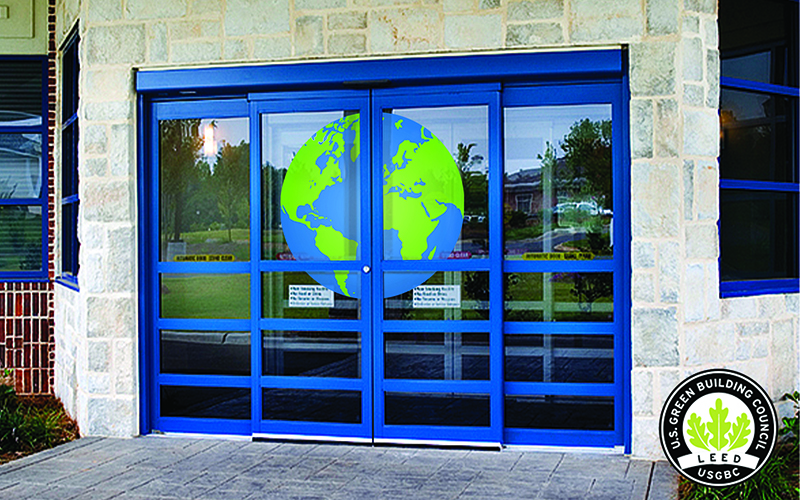Celebrating automatic doors on Earth Day - They can help buildings earn LEED ratings

Boston, MA On this Earth Day, the American Association of Automatic Door Manufacturers (AAADM) celebrates the ongoing move to green building, and the role automatic doors can play in more sustainable construction.
Automatic doors can contribute to energy savings for LEED ratings. Established by the United States Green Building Council (USGBC), LEED is the most widely accepted standard used to establish a sustainability rating for buildings.
Automatic doors do a stellar job of keeping climate-controlled air inside a building, reducing the energy needed to maintain a constant temperature. Air flows in and out of a building because of differences in air pressure. Regular pedestrian traffic at a typical large office building allows up to 30,000 cubic feet of air to escape per minute. An automatic revolving door creates an “always open, always closed” barrier, minimizing wasteful airflow.
Automatic sliding doors with appropriate seals (such as molding or a strip that blocks the gap between doorjambs and edges) can create a positive weather-tight seal that helps prevent airflow and saves energy. In addition, automatic door panels can be glazed with insulated glass to further promote energy savings.
Adding a vestibule, with a small entrance area between two automatic sliding doors, creates even greater energy savings.
And it’s not just air flow control where automatic doors contribute to greener buildings. Selecting automatic doors that contain recycled content can also earn LEED points. Framing and cladding on automatic doors can be made with recycled steel and aluminum. While aesthetic requirements often require a combination of primary materials and recycled materials, the higher the percentage of recycled content in the automatic doors, the more they will contribute to LEED points. Automatic doors may also contribute to a facility’s LEED points when door framing is coated with low-emitting materials, reducing the exposure of building occupants to irritating or harmful air contaminants.
Nobis Group awards Robinson and Moreira STEM scholarships

The design-build advantage: Integrated interior design solutions - by Parker Snyder

Careers in Construction Month focus on training and safety - by Joe Camilo

Ask the Electrician: Is summer a prime time for commercial electrical maintenance?









